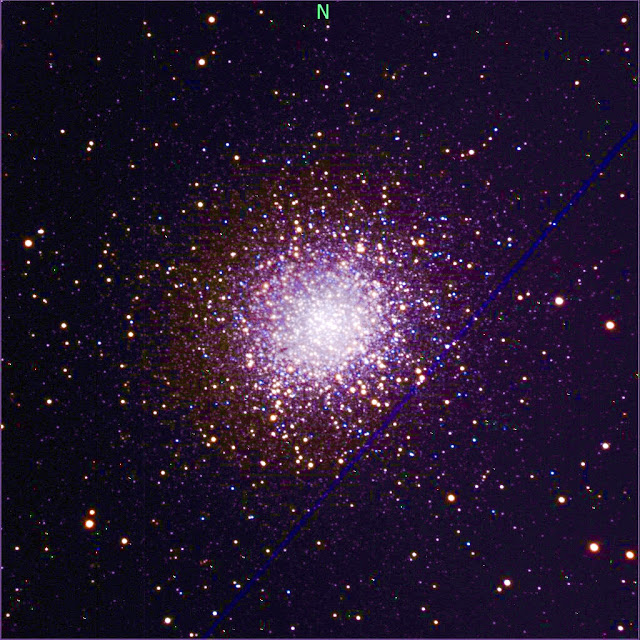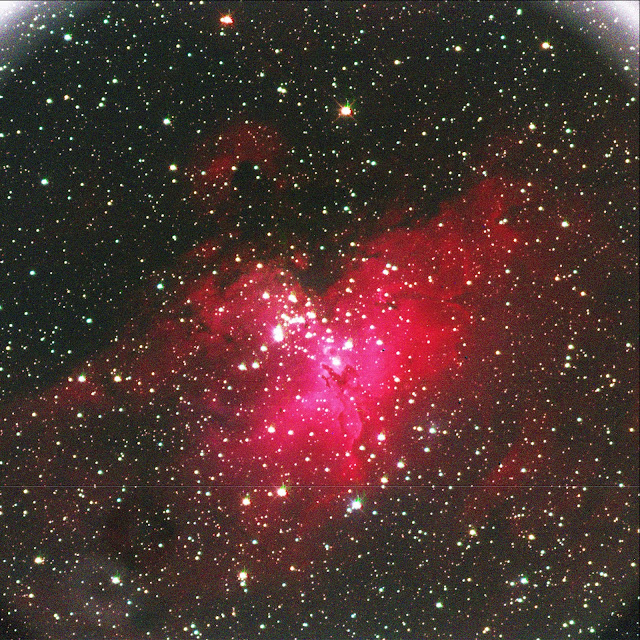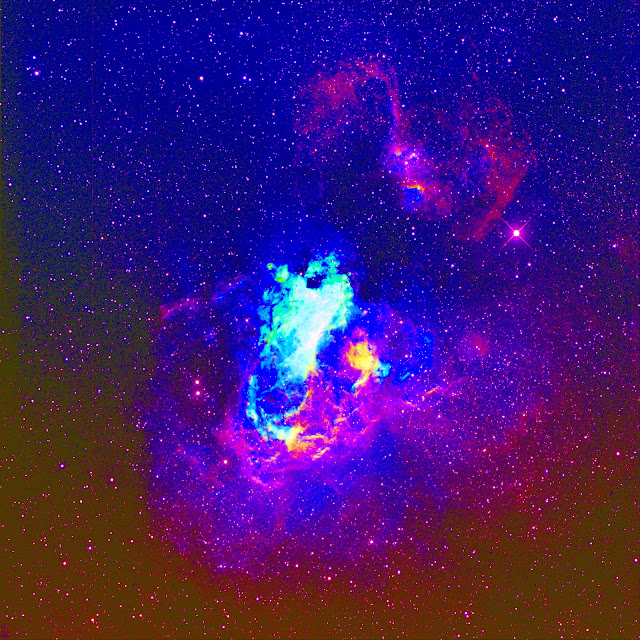Messier Marathon by Remote Telescopes (M10-M19)
梅西耶 馬拉松 之 遠端天文台 版本
Messier marathon is an attempt, usually organized by amateur astronomers, to find as many Messier objects as possible during one night. The Messier catalogue was compiled by French astronomer Charles Messier during the late 18th century and consists of 110 relatively bright deep-sky objects (galaxies, nebulae, and star clusters).
梅西耶 馬拉松 ( Messier Marathon ) 是在一夜內尋找到儘可能多,或儘可能完成全部110個梅西耶天體的活動。
https://zh.wikipedia.org/zh-tw/%E6%A2%85%E8%A5%BF%E7%88%BE%E9%A6%AC%E6%8B%89%E6%9D%BE
梅西耶目錄 是法國天文學家梅西耶在18世紀編輯的,總共有110個相對較明亮的深空天體(星系、星雲和星團)。
https://zh.wikipedia.org/wiki/%E6%A2%85%E8%A5%BF%E8%80%B6%E5%A4%A9%E4%BD%93%E5%88%97%E8%A1%A8
https://zh.wikipedia.org/wiki/%E6%A2%85%E8%A5%BF%E8%80%B6%E5%A4%A9%E9%AB%94
網路上的 遠端天文台,裡面設置 天文望遠鏡, 可以用網路遠端控制,做 天文攝影。
這種方案已經發展多年了,各種功能與介面也越來越純熟了。
遙控望遠鏡(遠端天文台) ( 草山星空 )
https://astrotracer.blogspot.com/2016/07/itelescope.html
我個人因為工作忙碌勞累,不容易參加實體的梅西耶馬拉松,於是就興起一個興趣,想用遠端天文台來拍攝梅西耶深空天體,希望可以在一年,或三年內完成全部110個梅西耶天體。
想稱之為:
梅西耶 馬拉松 之 遠端天文台 版本
預計使用 iTelescope 與 Telescope Live
** CCD 的 LRBG 或 HSO 原始影像 使用 DDS (2020年) 或 CCDStack 疊合 (2023年)
M10 ( NGC 6254 globular cluster) ( 蛇夫座 球狀星團 )
Messier 10 or M10 (also designated NGC 6254) is a globular cluster of stars in the equatorial constellation of Ophiuchus.
https://en.wikipedia.org/wiki/Messier_10
M10(NGC 6254)位於蛇夫座的一個球狀星團,視星等為6.6等,距離地球14000光年。M10的位置接近蛇夫座中心,與M12相距3.4度,結構比較鬆散。
https://zh.wikipedia.org/zh-tw/M10_(%E7%90%83%E7%8B%80%E6%98%9F%E5%9C%98)
Telescope Live
M11 ( NGC 6705 wild duck cluster) ( 蛇夫座 野鴨星團 )
https://en.wikipedia.org/wiki/Wild_Duck_Cluster
The Wild Duck Cluster (also known as Messier 11, or NGC 6705) is an open cluster of stars in the constellation Scutum (the Shield). It was discovered by Gottfried Kirch in 1681.[3] Charles Messier included it in his catalogue of diffuse objects in 1764. Its popular name derives from the brighter stars forming a triangle which could resemble a flying flock of ducks[3] (or, from other angles, one swimming duck). The cluster is located just to the east of the Scutum Star Cloud midpoint.
https://zh.wikipedia.org/zh-tw/%E9%87%8E%E9%B4%A8%E6%98%9F%E5%9C%98
野鴨星團(也稱為M11,或NGC 6705)是在盾牌座的一個疏散星團。它是戈特弗裡德·基什在1681年發現的[3]。夏爾·梅西耶在1764年將它收錄在非星天體的目錄中。它的名稱源自星團中較明亮恆星的排列形成一個三角形,類似於一群野鴨飛行的隊形[3],或者換個角度看,像是一隻游泳的鴨子。這個星團位於盾牌座恆星雲中點的東邊。
iTelescope
M12 ( NGC 6218) ( 球狀星團 )
https://en.wikipedia.org/wiki/Messier_12Messier 12 or M 12 (also designated NGC 6218) is a globular cluster in the constellation of Ophiuchus. It was discovered by the French astronomer Charles Messier on May 30, 1764, who described it as a "nebula without stars".
https://zh.wikipedia.org/zh-tw/M12_(%E7%90%83%E7%8B%80%E6%98%9F%E5%9C%98)
M12(NGC 6218)是一蛇夫座球狀星團與M10相距3.4度,接近蛇夫座中心,結構比較鬆散,如果在沒有光污染的情況下,使用4英寸(10厘米)的望遠鏡即可容易的看見它。它的星等為+6.6, M10距離地球14000光年。
M13 ( Hercules globular cluster) ( 武仙座 球狀星團 )
https://en.wikipedia.org/wiki/Messier_13
2023-04-07 T11 LRGB ( iTelescope ) RGB 120 sec x 4
用 CCDstack 疊合 RGB 各 120秒拍的影像,各 4 組疊合疊合
( 拍攝時,幸運的用到了滿月前後的免費時段)
( Telescope Live ) SPA-2 ( Officina Stellare 70cm F8 ) RGB 300 sec x 4
用 CCDstack 疊合 RGB 各 300秒拍的影像,各 4 組疊合疊合
SPA-2 ( Officina Stellare 70cm F8, Telescope Live ) 28吋
M14 ( globular cluster) ( 蛇夫座 球狀星團 )
https://en.wikipedia.org/wiki/Messier_14
Messier 14 (also known as M14 or NGC 6402) is a globular cluster of stars in the constellation Ophiuchus. It was discovered by Charles Messier in 1764.
https://zh.wikipedia.org/zh-tw/M14_(%E7%90%83%E7%8B%80%E6%98%9F%E5%9C%98)
M14(NGC 6402)是一個球狀星團,使用小型望遠鏡只能看見模糊的輪廓,使用10英寸(25厘米)的望遠鏡可以分辨出亮星。它的星等為+7.5,它在蛇夫座。
M15 ( globular cluster) ( 蛇夫座 球狀星團 )
https://en.wikipedia.org/wiki/Messier_15
Messier 15 or M15 (also designated NGC 7078) is a globular cluster in the constellation Pegasus. It was discovered by Jean-Dominique Maraldi in 1746 and included in Charles Messier's catalogue of comet-like objects in 1764.[citation needed] At an estimated 12.5±1.3 billion years old, it is one of the oldest known globular clusters.
https://zh.wikipedia.org/zh-tw/M15
梅西耶15或M15(也稱為NGC 7078)是位於飛馬座的一個球狀星團。它是Jean-Dominique Maraldi在1746年發現的,並且在1764年被收錄進梅西耶的似彗星天體目錄中。估計它的年齡是120億歲,是已知最老的球狀星團之一。
M16 ( Eagle Nebula) ( 鷹星雲 )
https://en.wikipedia.org/wiki/Eagle_Nebula
The Eagle Nebula (catalogued as Messier 16 or M16, and as NGC 6611, and also known as the Star Queen Nebula) is a young open cluster of stars in the constellation Serpens, discovered by Jean-Philippe de Cheseaux in 1745–46. Both the "Eagle" and the "Star Queen" refer to visual impressions of the dark silhouette near the center of the nebula,
https://zh.wikipedia.org/zh-tw/%E9%B9%B0%E6%98%9F%E4%BA%91
鷹星雲(M16,NGC 6611,也稱為星之皇后星雲),是瑞士的天文學家夏西·亞科斯在1745-1746年間在巨蛇座尾端發現的一個年輕疏散星團;法國天文學家梅西耶發現星團周圍的星雲,形狀如一隻展翅的老鷹,編入其目錄中成為編號第16的梅西耶天體。它包含幾個活躍的恆星形成區、氣體和塵埃區,包括由哈伯太空望遠鏡拍攝,著名的「創生之柱」。
iTelescope T33 20230-40-23 LRGB 120sec
M17 ( Omega Nebula, Swan, Horseshoe Nebula)
( 人馬座,射手座 歐米加星雲,也稱為天鵝星雲,或馬蹄星雲 )
https://en.wikipedia.org/wiki/Omega_Nebula
The Omega Nebula, also known as the Swan Nebula, Checkmark Nebula, Lobster Nebula, and the Horseshoe Nebula[1][2] (catalogued as Messier 17 or M17 or NGC 6618) is an H II region in the constellation Sagittarius. It was discovered by Philippe Loys de Chéseaux in 1745. Charles Messier catalogued it in 1764. It is by some of the richest starfields of the Milky Way, figuring in the northern two-thirds of Sagittarius.
https://zh.wikipedia.org/zh-tw/M17
歐米加星雲,也稱為天鵝星雲、核對符號星雲(Checkmark nebula)、或馬蹄星雲[1][2](在星表上是梅西耶17、M17、或NGC 6618),是坐落在銀河系中,位於人馬座的一個電離氫區。它是菲力浦·洛伊斯·德·切索在1745年發現的,查爾斯·梅西耶在1764年將它收錄於目錄中。
Telescope Live Image: 2022-06-16, Processing: 2023-05-20
HSO 600 sec, H->R, S->G, O->B
M18 ( open cluster ) ( 人馬座,射手座 疏散星團 )
https://en.wikipedia.org/wiki/Messier_18
Messier 18 or M18, also designated NGC 6613, is an open cluster of stars in the constellation Sagittarius. It was discovered by Charles Messier in 1764 and included in his list of comet-like objects.[8] From the perspective of Earth, M18 is situated between the Omega Nebula (M17) and the Small Sagittarius Star Cloud (M24).
https://zh.wikipedia.org/zh-tw/M18_(%E7%96%8F%E6%95%A3%E6%98%9F%E5%9C%98)
M18或梅西耶18,也稱為NGC 6613,是在人馬座的一個疏散星團。 它是梅西耶在1764年發現,並被列入它的類似彗星天體的清單中[8]。從地球的位置來看,M18位於歐米茄星雲和人馬座恆星雲(M24)之間[3]。
這是一個稀疏的[9]星團,實直徑大約8秒差距[5],潮汐半徑大約7.3秒差距[6],恆星集中的核心半徑為0.012秒差距[10]。它的川普勒分類是II 3 p[4]。M18的年齡約為3,300萬年[6],質量估計為188 M☉[5]。它擁有一顆Be星和總共29顆B型星[9]。有三顆超巨星,都是 A型或早期型[11]。 最亮的一顆(盧西達)是HD 168352,光譜類型是B2III,視星等+8.65 [4]。
M18距離地球1,296秒差距[2],距離銀河中心6,830秒差距[5]。它圍繞銀河核心運行的週期為1.865億年,離心率為0.02。這使它可以接近銀河中心至6,500秒差距,或遠離至6,800秒差距。它約每2,740萬年會穿越銀河盤面一次,而在盤面上下方的垂直距離不會超過80秒差距。
M19 ( globular cluster ) ( 蛇夫座 球狀星團 )
https://en.wikipedia.org/wiki/Messier_19
Messier 19 or M19 (also designated NGC 6273) is a globular cluster in the constellation Ophiuchus. It was discovered by Charles Messier on June 5, 1764[6] and added to his catalogue of comet-like objects that same year. It was resolved into individual stars by William Herschel in 1784.
https://zh.wikipedia.org/zh-tw/M19
M19(也稱為NGC 6273)是位於蛇夫座的球狀星團,於1764年被梅西耶發現,並於同年被登錄在他的似彗星天體的目錄中。
M19 是已知的球狀星團中最扁圓的,距離太陽系28,000光年,非常靠近銀河的核心,距離大約只有5,200光年。
Messier Marathon by Remote Telescopes (some experience) 梅西耶 馬拉松 之 遠端天文台 版本 ( 心得 )
Messier Marathon by Remote Telescopes (M1-M9)
Messier Marathon by Remote Telescopes (M10-M19)
Messier Marathon by Remote Telescopes (M20-M29)
Messier Marathon by Remote Telescopes (M30-M39)
Messier Marathon by Remote Telescopes (M40-M49)
Messier Marathon by Remote Telescopes (M50-M59)
Messier Marathon by Remote Telescopes (M60-M69)
Messier Marathon by Remote Telescopes (M70-M79)
Messier Marathon by Remote Telescopes (M80-M89)
Messier Marathon by Remote Telescopes (M90-M99)
Messier Marathon by Remote Telescopes (M100-M110)
Extra:
NGC Omega Centauri, and other Objects ( Omega Centauri NGC )
IC, Barnard, Sh2, Caldwell etc
Astrophotography by Web Remote Telescopes 網路天文攝影 初體驗 (再體驗) + 觀測紀錄
2023-04-08
2023-04-14





























沒有留言:
張貼留言